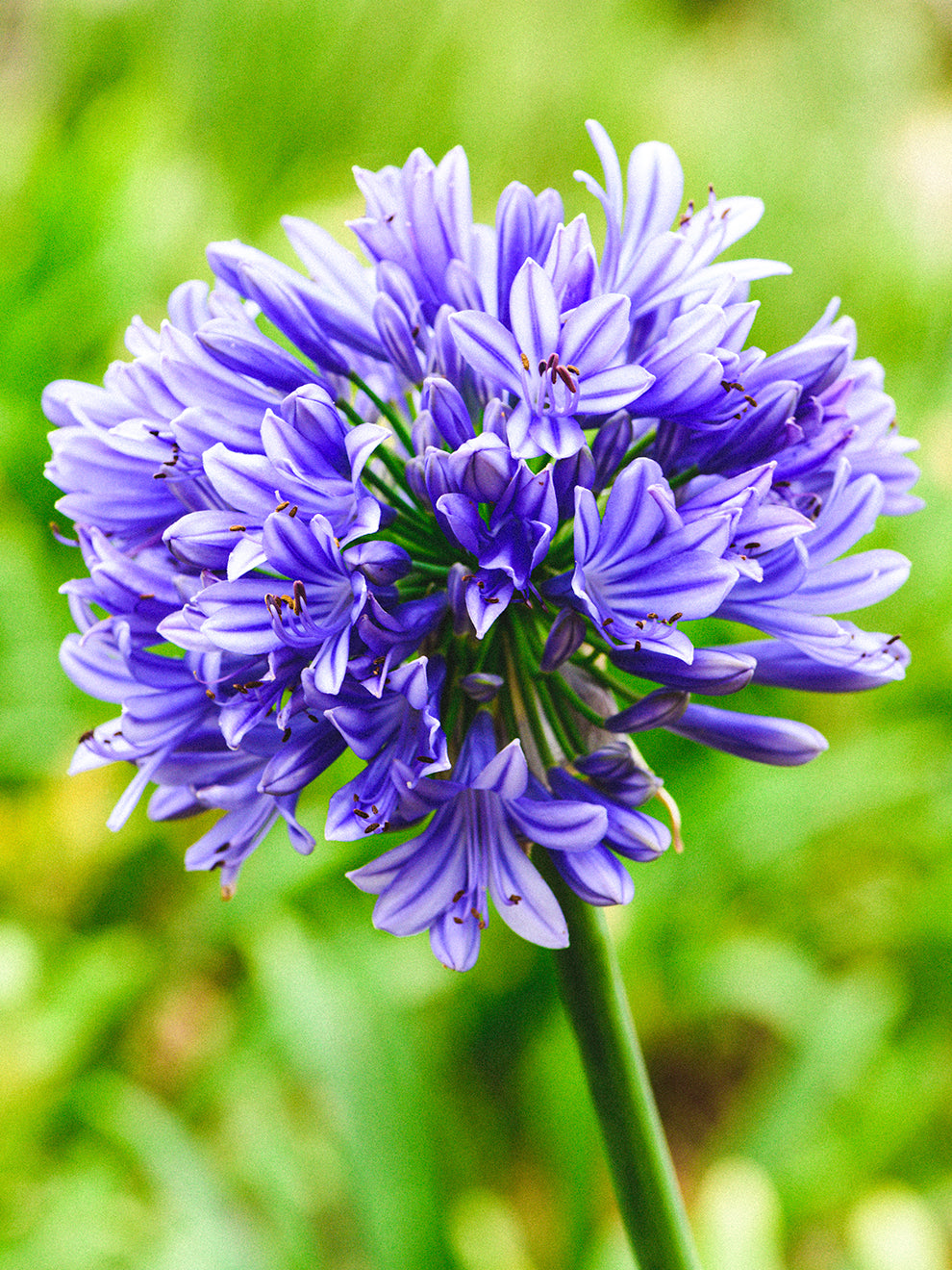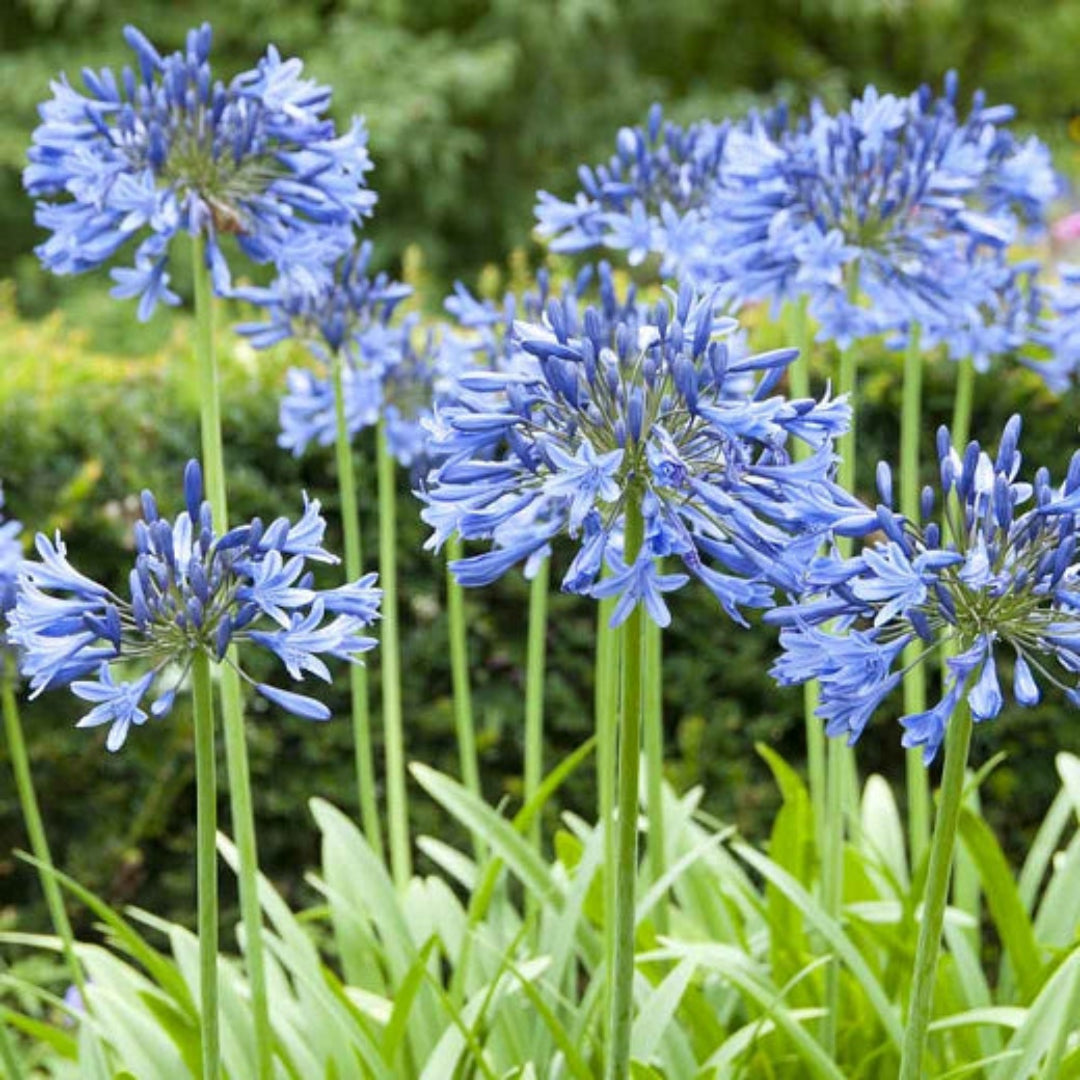Agapanthus Companion Plants: Perfect Pairings for Your Yard
Agapanthus Companion Plants: Perfect Pairings for Your Yard
Blog Article
Understanding the Art of Agapanthus Treatment: Vital Actions for Healthy Growth and Dynamic Flowers
In the world of cultivation, the farming of agapanthus stands as a gratifying venture for those that look for to support these elegant flowering plants. With their striking blooms and graceful foliage, agapanthus has actually recorded the attention of gardeners worldwide. Nonetheless, accomplishing ideal development and dynamic blooms needs a nuanced technique that includes numerous essential steps. From selecting the best range to grasping trimming strategies, the trip in the direction of growing prospering agapanthus plants is diverse and holds the essential to opening the full capacity of these botanical gems.

Selecting the Right Agapanthus Variety

When choosing the right Agapanthus variety for your yard, consider factors such as climate suitability, bloom color, and development behavior. Agapanthus, commonly referred to as Lily of the Nile or African lily, is available in a range of shades ranging from shades of purple and blue to white. Select a flower color that matches your existing yard scheme to produce a harmonious landscape. Furthermore, take into consideration the environment in your area to make sure the Agapanthus range you pick can prosper in your certain conditions. Some varieties are more tolerant of cool temperature levels, while others like warmer climates. Comprehending the growth habit of various Agapanthus selections is crucial for correct positioning within your garden. Some selections have a clumping growth practice, ideal for boundaries or containers, while others have an even more dispersing nature, ideal for ground cover or mass plantings. By carefully assessing these aspects, you can choose the excellent Agapanthus range to enhance the elegance of your yard.
Perfect Planting Problems
Considering the ideal ecological requirements is vital for effective Agapanthus farming. Agapanthus plants are sensitive to cool temperature levels and ought to be shielded from frost during wintertime months.
To make sure healthy growth and dynamic flowers, plant Agapanthus bulbs at a depth of regarding 2-4 inches and room them 8-12 inches apart. Mulching around the base of the plants aids retain wetness and reduces weed development.
Watering and Feeding Tips
Keeping appropriate dampness degrees and providing crucial nutrients are essential components in the care regimen for Agapanthus plants. When it comes to watering Agapanthus, it is crucial to strike a balance. These plants like continually damp soil yet are vulnerable to root rot if overwatered.
Feeding Agapanthus is crucial for promoting healthy and balanced development and respected blooms. Apply a balanced plant food, such as a 10-10-10 formula, in the very early springtime as brand-new development arises. Repeat this application every 6-8 weeks throughout the expanding period. Stay clear of excessive fertilizing, as it can result in rich vegetation at the expenditure of blossoms. Constantly follow the producer's directions for appropriate dilution and application techniques. By following these watering and feeding wikipedia reference pointers, you can ensure your Agapanthus plants flourish and produce dynamic, long-lasting flowers.
Trimming Methods for Agapanthus
Trimming Agapanthus plants at the appropriate times and with appropriate techniques is important for maintaining their wellness and promoting optimal growth and blooming. The excellent time to prune Agapanthus is in late winter months or early springtime prior to new development emerges.
For flowered stems, wait until the flowers my response have actually withered and afterwards trim them back to the base. This not only cleans up the plant's appearance yet additionally motivates the development of new blossom buds. Deadheading spent blossoms can also redirect the plant's power right into creating more blooms as opposed to setting seeds. Nevertheless, if you desire to gather seeds for breeding, leave some flowers to mature and dry on the plant.
Bear in mind to use tidy, sharp devices to make accurate cuts and decrease the danger of introducing illness. Agapanthus. Normal pruning will assist keep your Agapanthus looking neat and healthy while making sure a plentiful screen of attractive blooms
Managing Usual Insects and Diseases
After making sure proper pruning strategies for Agapanthus, it is essential to attend to usual parasites and conditions that can impact the health and get more vigor of these plants. One typical bug that influences Agapanthus is the Agapanthus gall midget.
Furthermore, Agapanthus plants can suffer from root rot if they are grown in badly draining pipes dirt. By being attentive and taking timely activity against diseases and parasites, you can assist your Agapanthus plants grow and create vibrant flowers. Agapanthus.

Verdict
In final thought, grasping the art of agapanthus care involves selecting the ideal selection, providing ideal planting conditions, proper watering and fertilizing, suitable pruning techniques, and dealing with typical pests and diseases. By following these important actions, you can ensure healthy growth and lively blooms for your agapanthus plants. Remember to routinely keep track of and preserve your plants to advertise their general wellness and durability.
To ensure healthy and balanced development and vivid blooms, plant Agapanthus light bulbs at a depth of about 2-4 inches and room them 8-12 inches apart. By adhering to these watering and fertilizing ideas, you can guarantee your Agapanthus plants grow and produce lively, durable blooms.
One usual parasite that influences Agapanthus is the Agapanthus gall midge. Additionally, Agapanthus plants can endure from origin rot if they are grown in inadequately draining pipes soil. By adhering to these necessary steps, you can ensure healthy development and lively blooms for your agapanthus plants.
Report this page